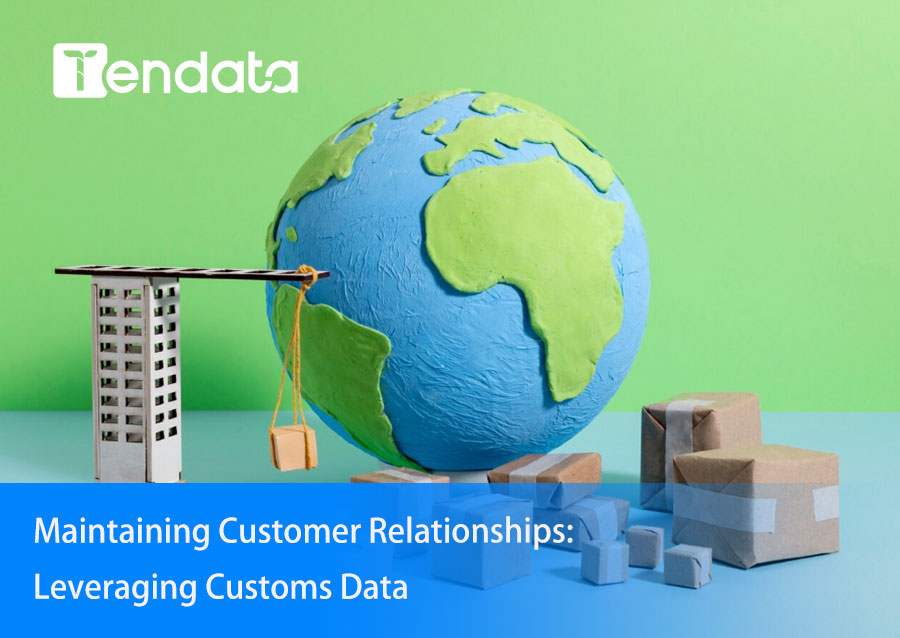 Trade Data Provider
Trade Data Provider
 21-12-2023
21-12-2023
Navigating the world of international trade, Importers and Exporters often encounter situations where long-standing customers suddenly terminate collaborations or show a decline in orders. In such scenarios, the key is not only to inquire about the reasons for the disruption but also to proactively utilize customs data to understand and address the underlying issues. This article delves into the strategies of maintaining customer relationships by leveraging real transaction data from customs records.

How to Utilize Customs Data to Sustain Existing Customer Relationships?
1. Understanding Customer Disruptions: Unraveling the Reasons
Importers and Exporters commonly face the challenge of customers abruptly terminating partnerships. Rather than accepting vague reasons at face value, a proactive approach involves delving into customs data to uncover the true causes behind the disruptions.
2. Analyzing Recent Transaction Data: Identifying Changes in Customer Behavior
Examining recent bill of lading data and detailed transaction records allows exporters to identify changes in customer behavior. Have there been alterations in the types of products imported? Any additions or modifications in the product portfolio? Understanding these dynamics helps in aligning products and pricing more effectively.
3. Assessing Market Shifts: Adapting to Changing Customer Needs
Customs data provides valuable insights into market shifts. By analyzing the primary markets, exporters can adapt their strategies to meet changing customer needs. A deep dive into demand fluctuations and market preferences ensures a proactive response to evolving market dynamics.
4. Uncovering the New Procurement Landscape: Investigating Supply Chain Changes
When a customer decides to terminate collaboration, it's crucial to investigate their new procurement sources. Examining the suppliers they are currently engaging with, understanding their supply chain dynamics, and scrutinizing specific procurement transaction records offer a comprehensive understanding of the customer's current trade landscape.
5. Rebuilding Connections: Turning Insights into Opportunities
Armed with insights from customs data analysis, exporters have the opportunity to rebuild connections with customers. By addressing the root causes of disruptions and adapting strategies based on the newfound understanding, exporters can turn the tide and re-establish fruitful collaborations.
Conclusion: Proactive Customer Relationship Management
In the import and export business, customer disruptions are inevitable, but they also present opportunities for proactive management. Leveraging customs data to understand the intricacies of customer behavior, market shifts, and new procurement landscapes empowers Importers and Exporters to adapt strategies, rebuild connections, and sustain long-term customer relationships.
>>>Click to Get 91 Countries' Customs Data for Free<<<
The first step in international trade is to understand the trade information of both buyers and sellers. In the era of big data, enterprises that can effectively use customs data will find it easier to stand out in a competitive environment. For import and export businesses, trade data is one of the most valuable types of data, enabling companies to gain in-depth insights into their market conditions from multiple dimensions, including market trends, customers, and competitors. Follow Tendata to see how to analyze the market using customs import-export data.
I. Obtain Customs Data for 91 Countries and Identify Suitable Customers
Tendata's customs database provides real-time global customs data covering 91 countries, data for 42 countries along the Eurasian route, 100+ billion real-time trade data, and information on 180 million global enterprises. It helps you understand global market trade trends and distribution, allowing you to quickly, accurately, and scientifically target hot-selling countries and emerging markets for your products. >>>Consult Online
II. Present Trade Details and Directly Contact Buyers
Import and export data is one of the fundamental tools for Importers & Exporters to develop customers. It enables them to go from understanding the market to knowing competitors and then to developing customers.
Tendata iTrader provides various search criteria to examine details of each cross-border transaction, such as importer & exporter information, product categories, transaction quantities, transaction amounts, country of origin, carrier, port of departure, and port of arrival. Quickly and in bulk, obtain buyers based on their purchase volume, price, and preferences, positioning your target customers. By comparing historical data, quickly identify genuine buyers, providing you with precise opportunities for successful transactions. >>>Click to Get Sample Online
III. Professional Market Analysis to Seize Opportunities for Transactions
Which website is good for querying customs data? This is something many import and export enterprises are very concerned about!
Tendata's customs data platform offers nearly 20 types of customizable, multi-dimensional market analysis reports (>>>Click to Use Data for Free Online). It allows for easy capture of the main markets and customers of competitors. Through the analysis of the volume and price of peer transactions and the supply chain analysis of target customers, detailed information on customer bills of lading, competitor details, and intelligent generation of various data analysis reports highlights your competitive advantages, helping you seize more market share.

>>>Consult with 1-on-1 Online Customer Service<<<
Category
Leave Message for Demo Request or Questions


 T-info
T-info T-discovery
T-discovery

 My
Tendata
My
Tendata Market Analysis
Market Analysis Customer
Development
Customer
Development Competitor
Monitoring
Competitor
Monitoring Customer Relationship
Customer Relationship





































































































































